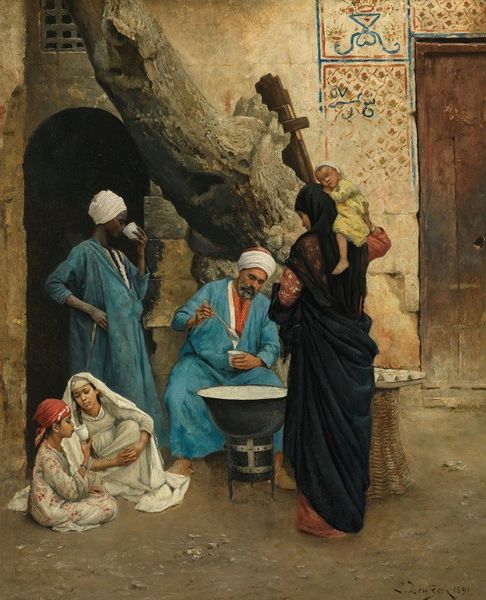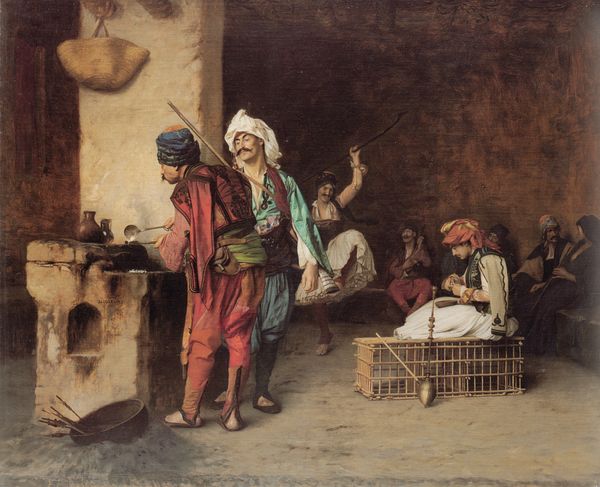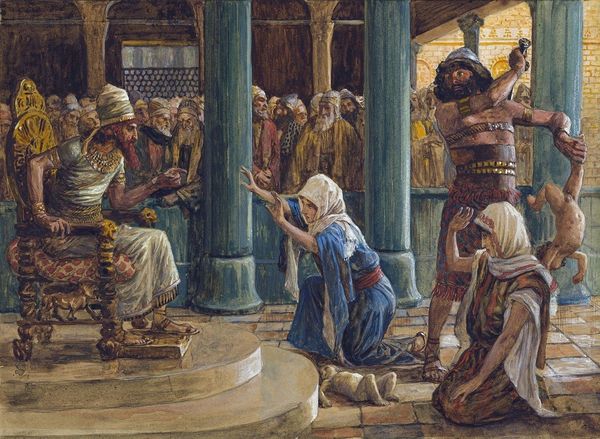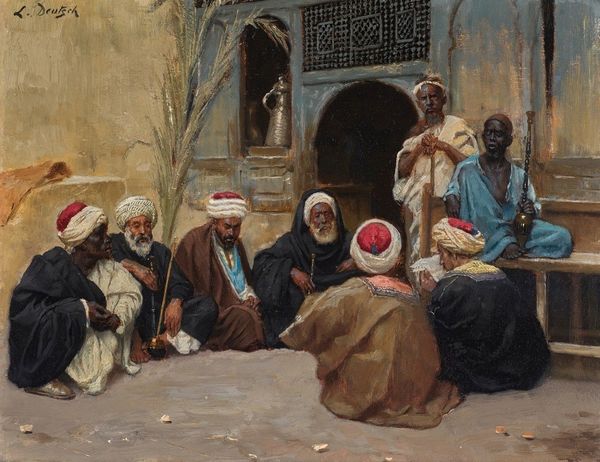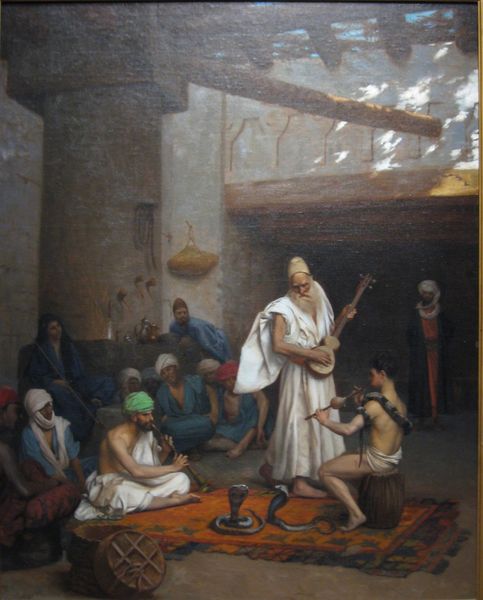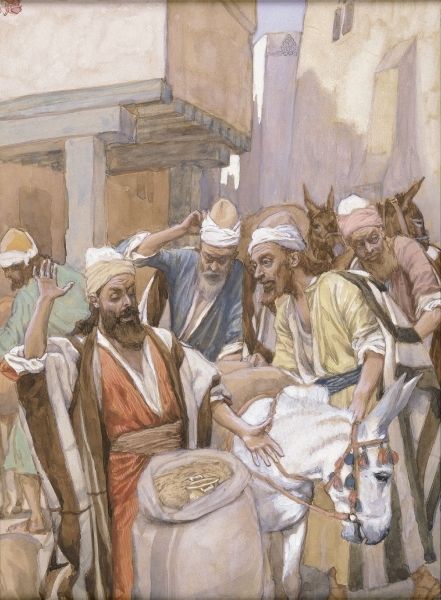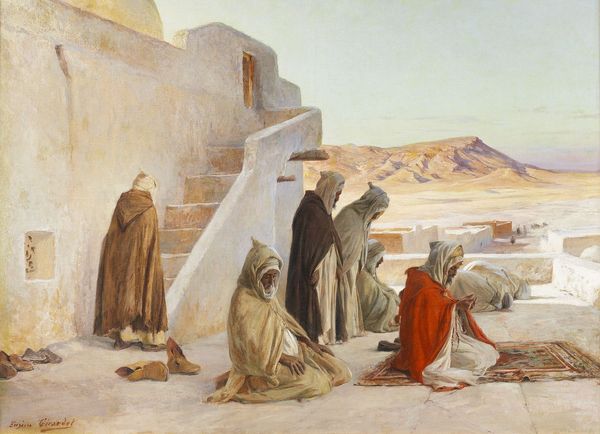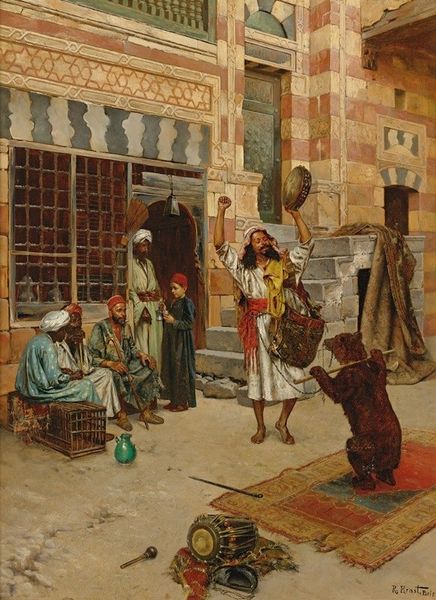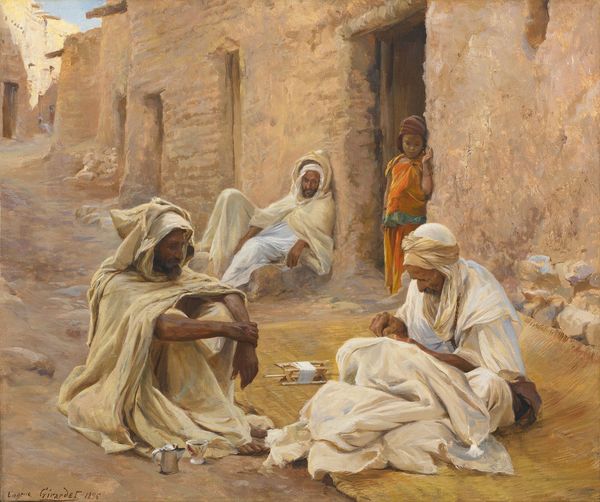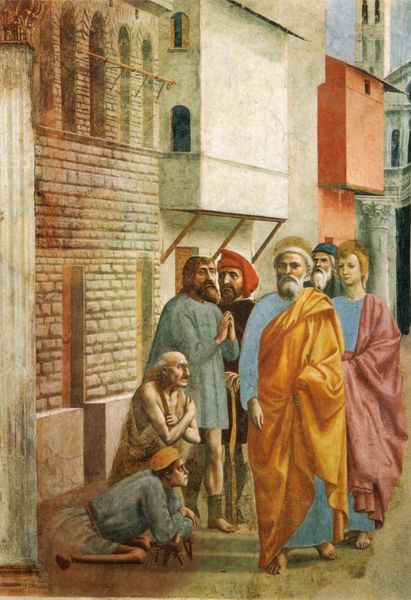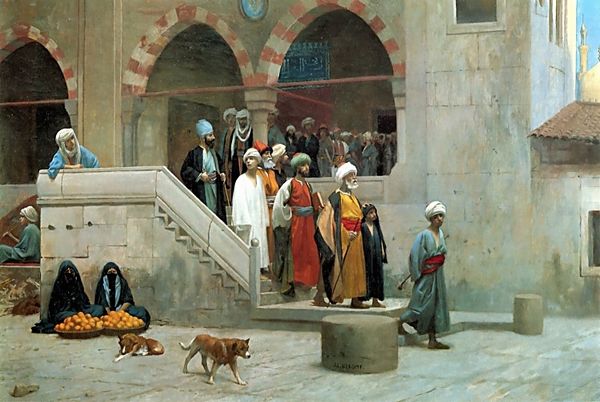
painting, oil-paint
#
figurative
#
narrative-art
#
painting
#
oil-paint
#
figuration
#
oil painting
#
orientalism
#
islamic-art
#
genre-painting
#
academic-art
#
portrait art
Copyright: Public Domain: Artvee
Curator: Looking at this piece, what are your initial observations? Editor: Well, immediately I'm struck by the controlled geometry, the way the artist orchestrates the space. The rigid verticality of the architecture in counterpoint with the softer curves of the figures generates a kind of visual harmony... Curator: Indeed. This oil on canvas is entitled "In the Madrasa," by Ludwig Deutsch, completed in 1890. Deutsch was an Austrian painter known for his Orientalist scenes. The work captures a scene within a traditional Islamic school, showcasing the learning environment. Editor: Orientalist indeed! You can see how he revels in the decorative quality of the space: note the meticulously rendered woodwork on the cupboards and minbar. Curator: It’s hard to ignore the power dynamics here. Deutsch, as a European artist, is gazing upon this scene through a lens of colonial gaze and privilege. These images played a crucial role in constructing Western perceptions of the East, often reinforcing stereotypes of backwardness and exoticism. Editor: That may be true. I am simply captivated by the precise details. And in my opinion it does seem that his intention, purely technically speaking, appears rooted in objective observation. He employs crisp lines, subdued palette to achieve naturalism above all. The use of oil creates a marvelous play of light across the architectural details. Curator: Yes, but is that so? One has to question whether there is such a thing as a neutral, objective lens. Art, and the narratives embedded within it, are almost always inherently intertwined with the sociopolitical environment in which it was produced and received. His approach to the painting certainly conveys more than just surface observation. Editor: I’ll concede to that! Though that’s where it loses my personal admiration. Despite that fact, it would appear that the composition itself invites careful reading in order to draw your intended conclusion. In other words, it's as successful as art because of, and not in spite of, how the shapes and the palette play together! Curator: Right. Considering it's display within a modern collection, it can provide a valuable point of reflection for contemporary issues relating to intercultural representations, historical power imbalance, and even race within institutional systems. Editor: I have to say that it is indeed rather intellectually exciting that we may look through form to glimpse wider significance. Curator: Absolutely! And it's these multilayered interpretations that makes the image so interesting.
Comments
No comments
Be the first to comment and join the conversation on the ultimate creative platform.
